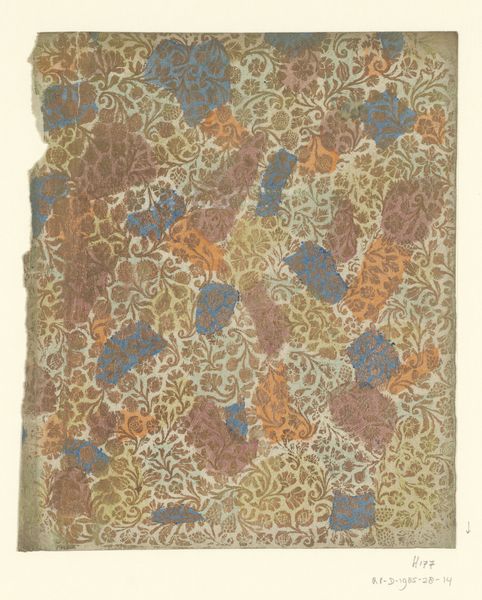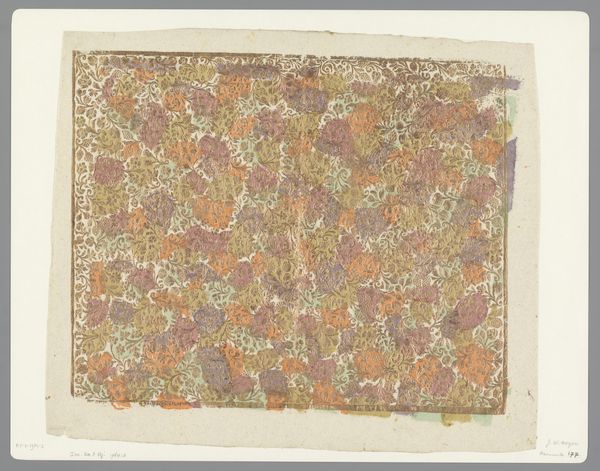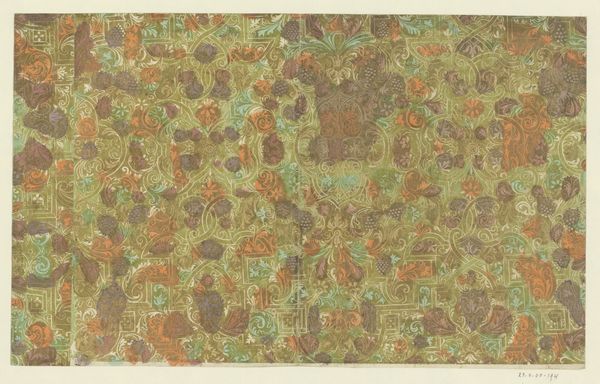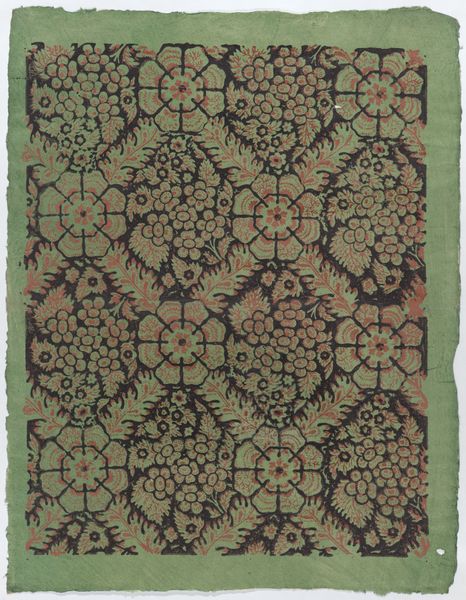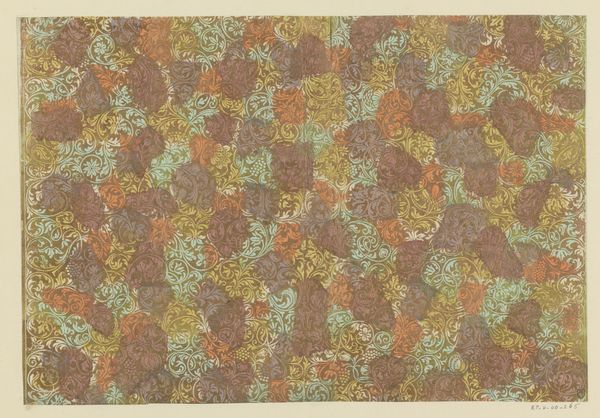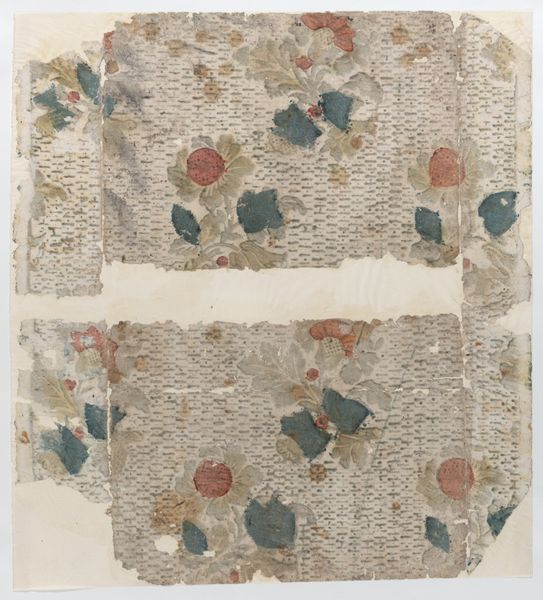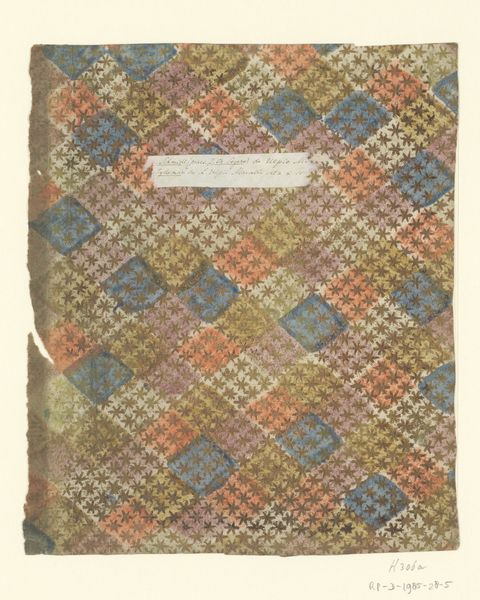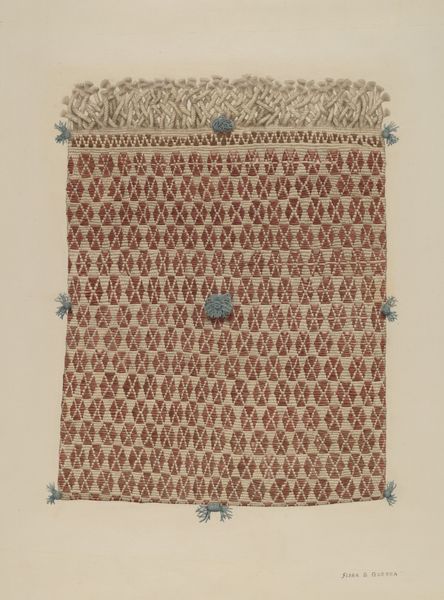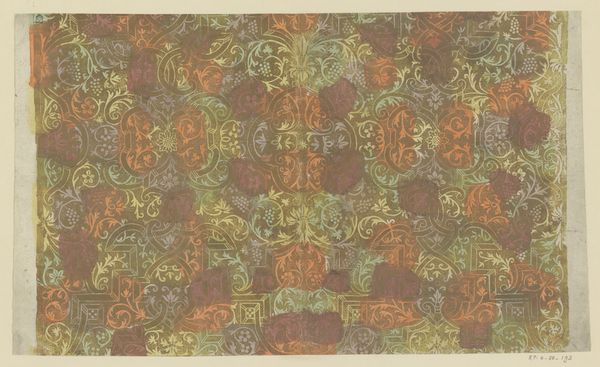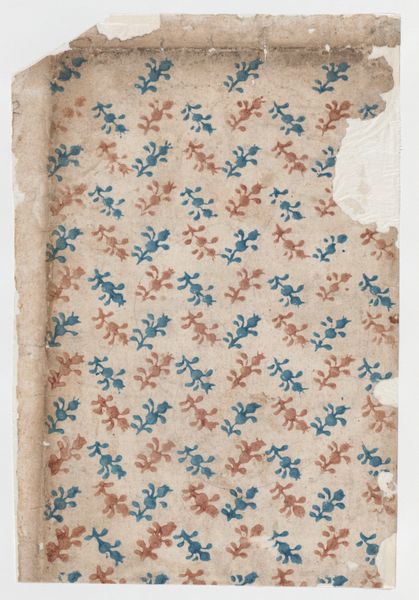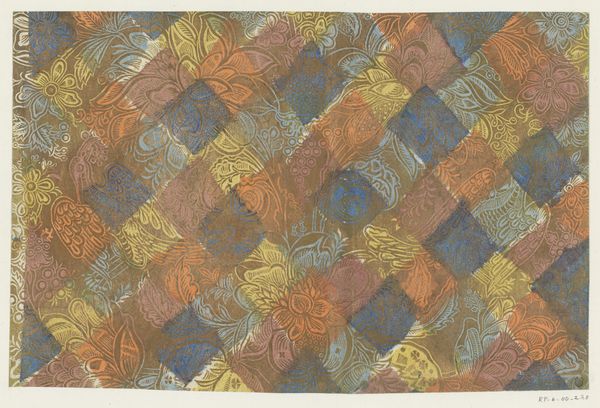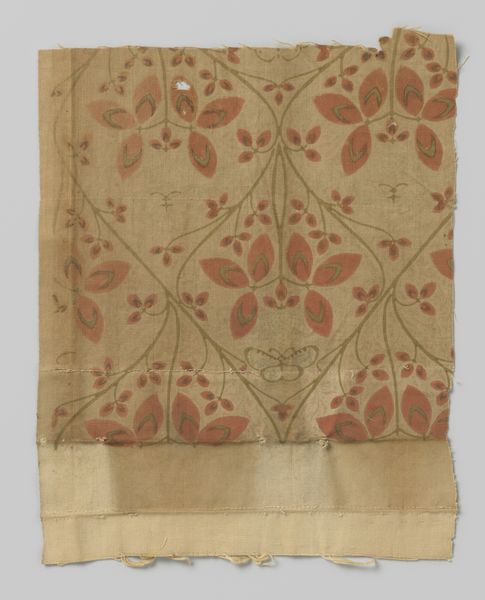
drawing, paper
#
drawing
#
natural stone pattern
#
naturalistic pattern
#
organic
#
pattern
#
paper
#
pattern background
#
abstract pattern
#
organic pattern
#
flower pattern
#
repetition of pattern
#
vertical pattern
#
pattern repetition
#
decorative-art
#
layered pattern
#
rococo
Dimensions: height 258 mm, width 216 mm
Copyright: Rijks Museum: Open Domain
Editor: This intricate sheet of vining flowers and fruits, simply titled "Blad met ranken met bloemen en vruchten," was created by Johann Wilhelm Meyer sometime between 1740 and 1780. It's a drawing on paper, and it really strikes me as ornate. What catches your eye when you look at it? Curator: What immediately grabs me is the *sheer* density of labor involved. Think about the meticulous, repetitive movements required to render this elaborate pattern, not just once, but across the entire sheet. It transforms the role of the artist from visionary to artisan. Editor: Artisan, yes, I see what you mean. It’s so uniform, almost like a textile design. Does that affect how we should value it as art? Curator: Absolutely. This challenges the hierarchy between "high art" and "craft." By examining its materiality and means of production, we can appreciate it beyond just aesthetics. What paper was available? What tools shaped those details? Were such drawings designs to be copied, or valued in themselves? Those are the questions that shape our perspective here. Editor: So, you're suggesting its value lies less in individual expression and more in the social context of its creation and possible use? Curator: Precisely. It speaks volumes about the values and demands of the culture that produced it. The Rococo period prioritized ornamentation, demanding that artisans achieve astounding levels of detail. It forces us to rethink the status of "mere" decoration. Editor: That makes me look at the image in a new way, to think of it as a product of its time, reflective of social forces. Curator: And remember, patterns like these often wound up on luxury objects accessible only to specific segments of society. The very act of drawing it – and commissioning the drawing -- could have been about expressing privilege. Editor: Thank you, that shifts my perspective considerably! I now see how the medium and its historical usage contribute so much to the drawing’s artistic meaning.
Comments
No comments
Be the first to comment and join the conversation on the ultimate creative platform.
